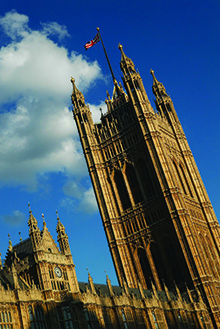Making more and more information available to the public has become one of the tools used by Government to demonstrate that it is being open and transparent. It is increasingly being used as an indicator of the transparency of the Government.
However simply making information available is far from the complete answer.
Public consultations bring the issue of evidence into sharp focus. There are debates to be had about what information is and is not made available, how it is made available and in what format. Consultations have often been challenged on what raw data has been provided to the public or what the evidence is behind a particular option or policy that forms part of the consultation.
Of course, those looking to create problems for a consultation will always look for the weak spots to try and challenge it but there is a serious question to be asked about the impact of the evidential base on the design of a consultation.
Too often, there are arguments over what the data really means as well with little or no agreement over the starting point. Some of the basis of the challenges over the Leeds Infirmary consultation and subsequent suspension of children’s heart surgery came down to an argument over the data and evidence used and made available.
A similar situation can be imagined for the current inquiry into aviation capacity. Even from the outset there is disagreement over questions of need and capacity. Sometimes the same sets of statistics are used but with different interpretations, on other occasions completely conflicting sets of evidence. The first task is to get some common ground agreed otherwise there will never be agreement on the outputs. Similar discussions between supporters and opponents have taken place over HS2.
Whilst talking about evidence based decision-making, Government does not always release the evidence, assuming that it does exist. Formal consultation papers are not always accompanied by the detailed evidence used to assess the options. Then there are the occasions when the ‘something must be done’ line is used, for instance on the level of new EU immigrants into the UK, but the Government cannot prove that there is a problem because it does not have the evidence.
Too often information is released by Government or as part of consultations with little or no context or explanation. A mass of information is simply dumped onto the public. This actually has the opposite effect of that intended – Government becomes less transparent and the data builds a wall between citizen and Government.
Far from Eric Pickles having empowered an army or ‘armchair auditors’, many do not have the time or inclination to wade through the information. Another key problem is the lack of skills that most citizens have to do anything with all the information.
For many in the tech sector what they need is data that can be manipulated so that they can do something useful with it and maybe find an opportunity to exploit it commercially. This is where the real power of Government data and evidence sits for the future.
It has to be recognised that politics and political decision making are not always based purely on evidence. However, the more that we come to expect to see the evidence, the more that Government will have to provide it in an agreed and comprehensible format.

